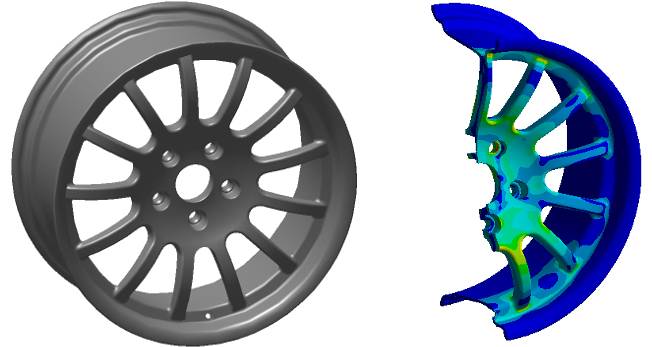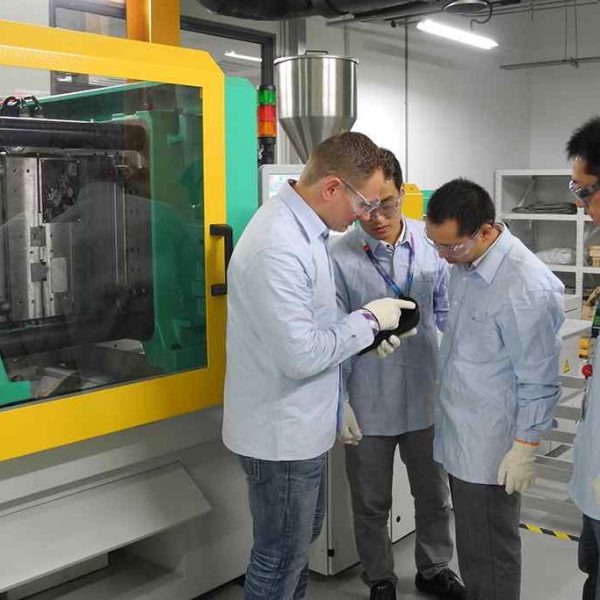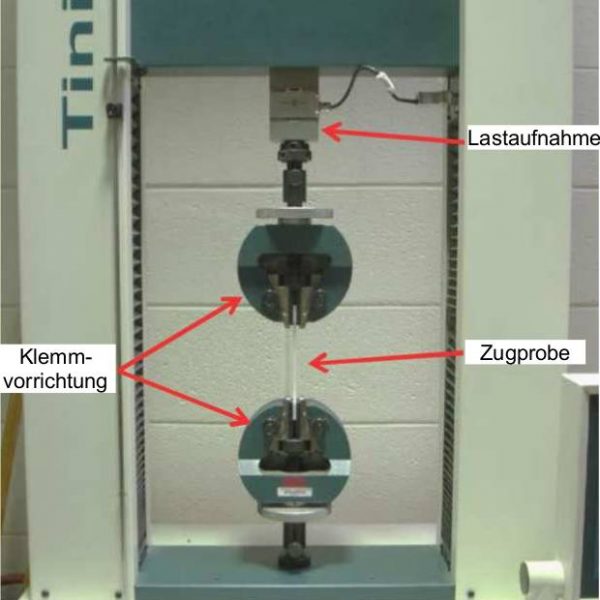The safeguarding of function and product quality by means of FEM calculation in mechanical and plant engineering is now common practice. Originally the Product development with the help of FE analysis rather limited to the automotive sector. In the meantime, however, word has spread to other branches of industry that time and cost savings are enormously high when prototypes are checked for correct functioning by means of FEM simulation before construction.
Thus, constructional weaknesses can be detected and repaired before the first real test. Furthermore it enables the structural optimization of individual components, costs and material while maintaining optimum component functionality. This approach makes it possible to test and validate only those prototypes that already deliver promising results in the simulation. Avoid component failure and play it safe with our support !

Structural optimization of a light alloy wheel
Find out more about our CAE services in the following areas:
State of the art structural analysis using FEM calculation
In the past, due to a lack of computing capacity and immature algorithms, only individual components could be considered in structural analysis. Today, however, it is possible to realistically represent entire assemblies and thus mutually contacting components. In the meantime, powerful hardware has made it possible to simulate interactions between structural mechanics and flow within the framework of fluid-structure interaction (FSI simulation).
Procedure for securing the function of your products by FE simulation
When it comes to ensuring that your products function perfectly, we take a close look at your design.

According to the requirements that have to be fulfilled in the course of tests and production processes, we use FE analysis to represent reality in the best possible way. On request, we contact testing institutes and facilities to determine the respective requirements of the tests or inspections to be carried out and to design your product accordingly. In doing so, we consistently implement these in our FEM simulation as boundary conditions and loads. In addition, we define contact parts that are in contact with each other as realistically as possible.
For this purpose, we determine the coefficients of friction of contacting bodies by research, which Coordination of corresponding tests or carry out parameter studies to compare the FEM simulation with the measurements of our customers. In this way, we have already been able to achieve an accuracy of approx. 3% with our simulation in comparison to customer measurements !
Determination of the material data for the FEM calculation
Benefit and result quality of an FE analysis depends mainly on the material models used and the assumptions and simplifications made.
Depending on which data is required for the FEM calculation, we either use material data provided by the customer or also coordinate material tests and trials if necessary.
For common standard materials, we also draw on our many years of experience, both through the derivation of synthetic material curves and special databases. For the structural analysis of injection moulded components we can, if required, carry out an upstream injection moulding simulation in order to include production-dependent parameters (e.g. fibre orientation) in the respective consideration of the component strength.

Tensile test to determine the material characteristics
Failure criteria for structural analysis
For a failure assessment of individual components, we use a test to reproduce loads and boundary conditions acting on the overall construction as realistically as possible. In doing so, we work with you to define the necessary failure criteria on the basis of the evaluation of existing material models. Depending on whether a fatigue-resistant design is desired or a unique worst-case scenario (e.g. crash) is to be represented, we supply you with the right solution to suit your tasks. We support you in designing your construction correctly.
Structural optimization through FE analysis to save weight and costs
Often lightweight structures in particular must be able to withstand the required loads at minimum weight. At the same time, the constantly increasing cost pressure increasingly requires existing designs to be optimized for marketability. By means of structural optimization, maximum component strength can be achieved with a minimum of material. We check your design and show you the optimisation potential in a targeted manner in the following types of analysis:
- Structural optimization for optimum component strength with minimum material input (topology optimization)
- Determination of the optimal structure of sheet metal parts by optimizing the sheet thickness and introducing stiffeners (topography optimization)
Project examples for structural mechanical FE analyses: